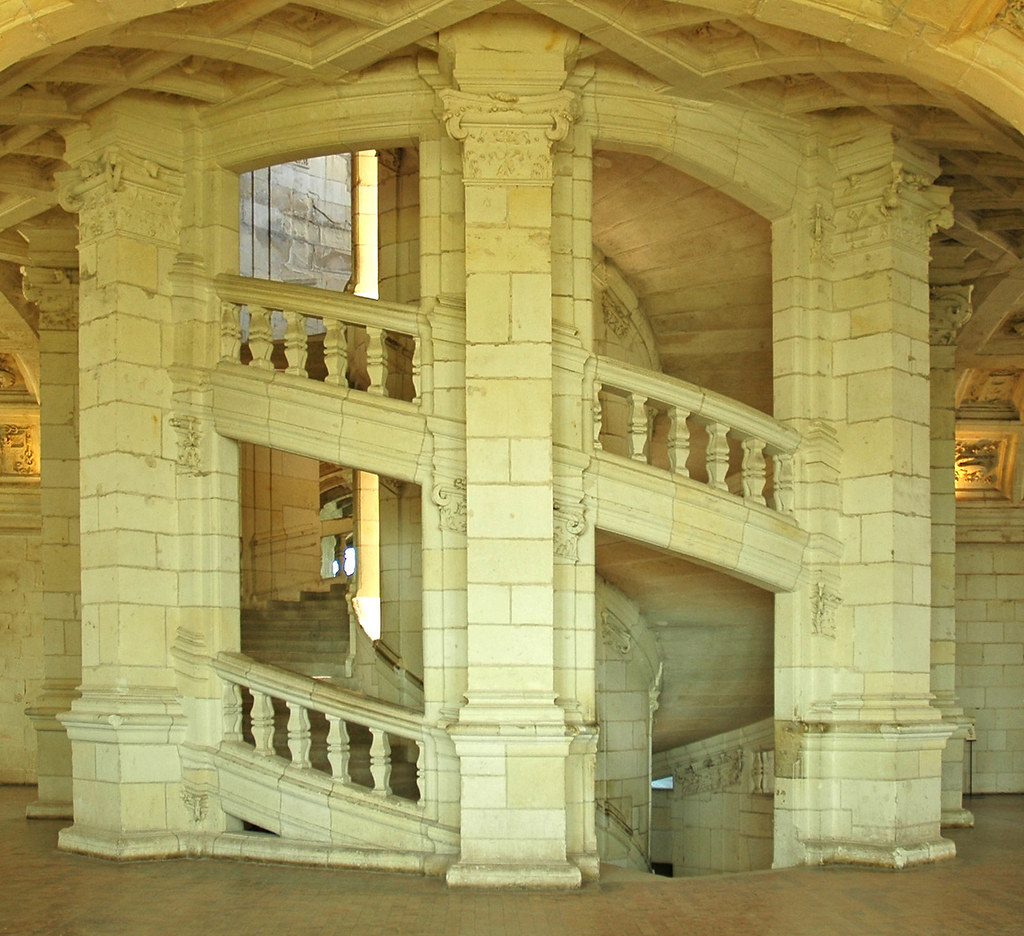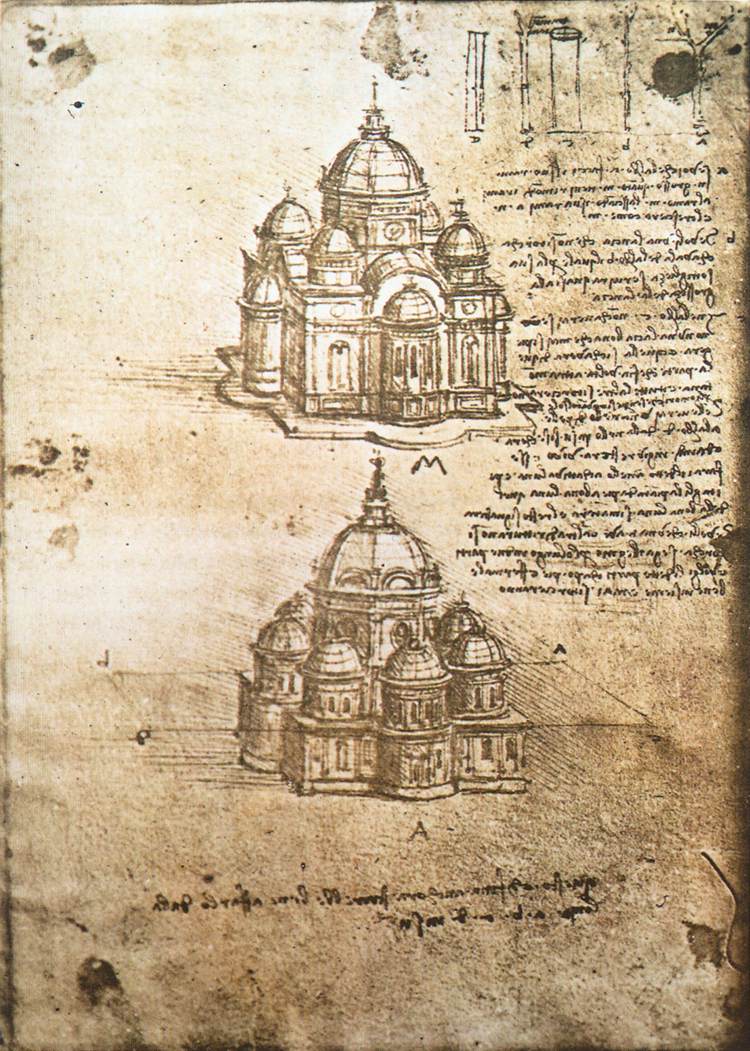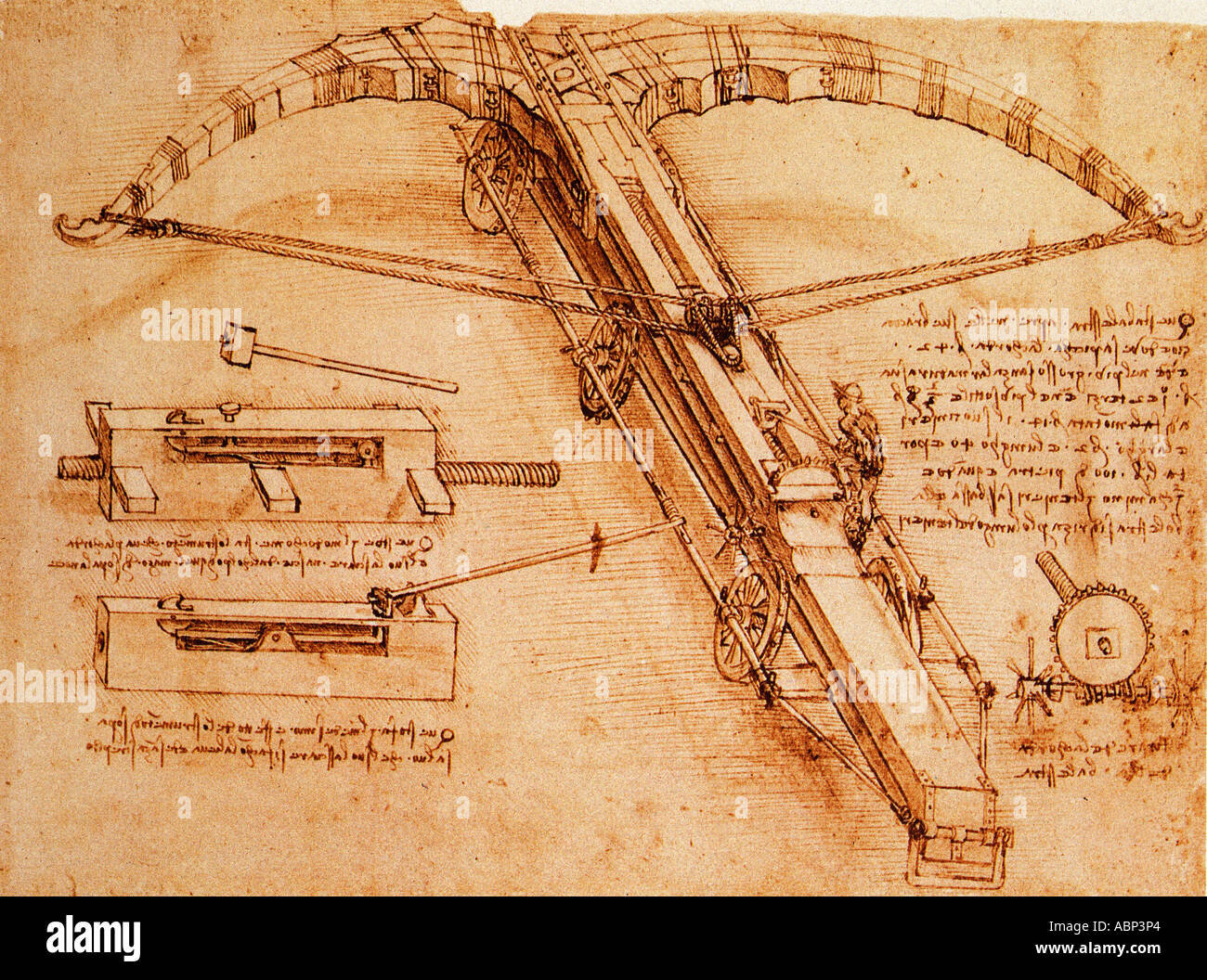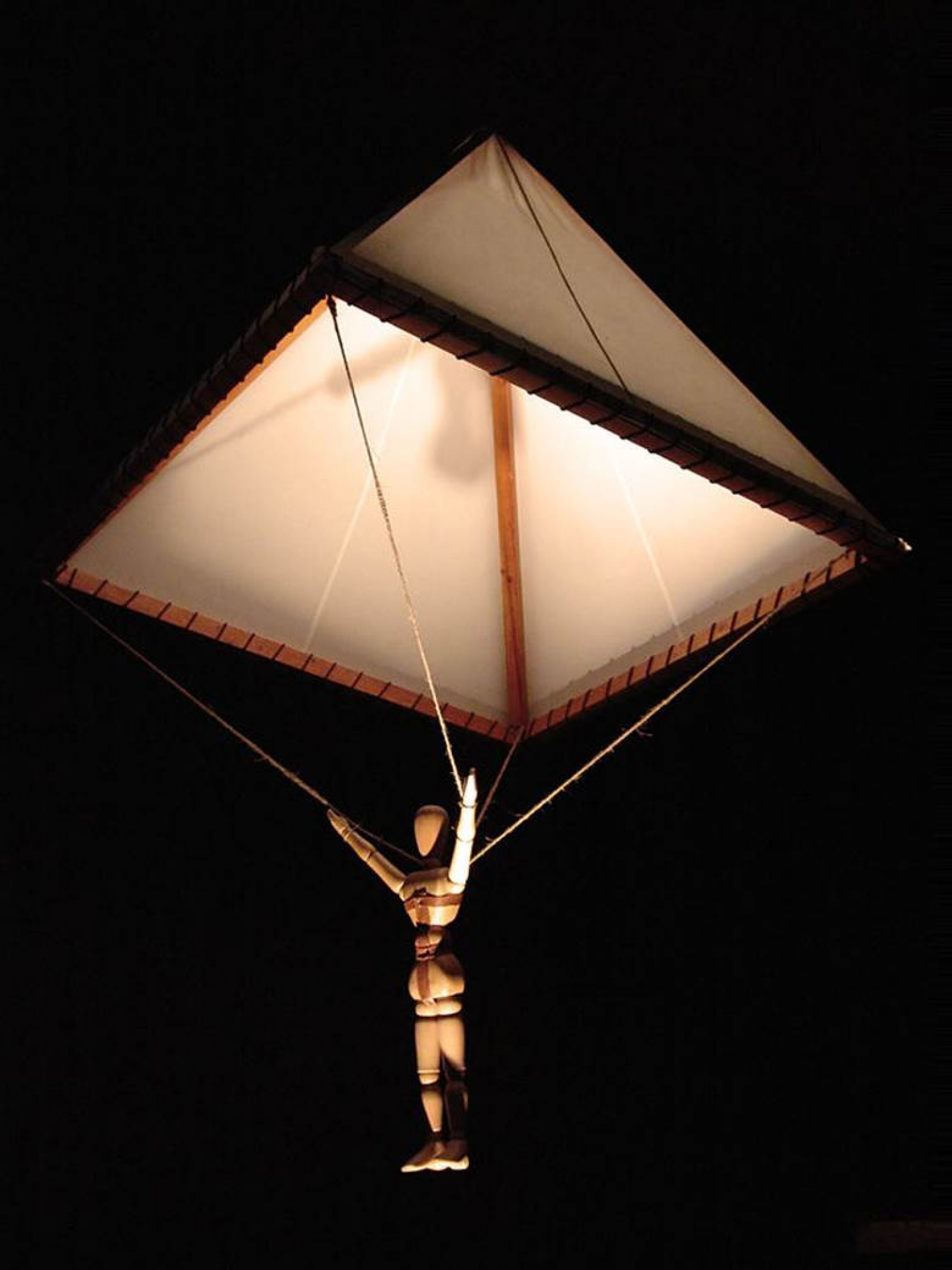
Design for a flying machine by Leonardo da Vinci
The figure of Leonardo da Vinci has been extensively studied. In fact, the Leonardiana Library brings together tens of thousands of titles on Leonardo and his work. During the second half of the 20th century, various treaties were published focusing on Leonardo's activity as an engineer, and more recently, an increasing number of scientific articles that focus on certain aspects of the.

Of the many structures Leonardo da Vinci designed, perhaps none made
Leonardo da Vinci Designs the Ideal City: See 3D Models of His Radical Design. Le Corbusier, Frank Lloyd Wright , Ray Bradbury: they and other 20th-century notables all gave serious thought to the ideal city, what it would include and what it would exclude. To that extent we could describe them, in 21st-century parlance.

Leonardo Da Vinci's doublehelix staircase at Château Cham… Flickr
1. Drawing of Centrally Planned Church. Da Vinci is credited with inventing a new technique of representing architectural drawings. He combined the bird's eye view of the building and its floor plan in a single system to provide maximum information about the building, external and internal, in a single drawing.

Château de La Rochefoucauld Staircase, Leonardo da Vinci, 1516
Dome building, Paris Manuscripts B Appendix (folio 12r), Leonardo da Vinci, c. 1490A design in central construction typical for Leonardo St. Peter's Basilica Rome, 1506-1626Leonardo worked closely with Bramante, the original architect of St. Peter's Basilica Chambord Castle, France, 1519-1547 This magnificent chateau is considered the pinnacle of Renaissance architecture in France.Famous is a.

a spiral starcaise designed by Leonardo da Vinci Stairs, Architecture
The Virgin and the Laughing Child is said to be Leonardo da Vinci's only surviving sculpture. Leonardo da Vinci is long-thought to have made sculptures, but since his death in 1519, no three.

Da Vinci sketch Renaissance Men, Italian Renaissance, Wireframe, Da
The painter of Mona Lisa was not only a genius with pure artistic sensibilities but also a man with his flurry of 'hip' designs that were far ahead of their time.Yes, we are talking about the conceptual inventions of Leonardo da Vinci (1452 - 1519 AD), and how they incredibly mirror many of our modern-day contraptions. So, without further ado, let us take a gander at the eight amazingly.

6 Leonardo Da Vinci Inventions That Changed History Forever
However, it took the development of the automatic reloading mechanism in the 19th century to make such devices practical. Like many of Leonardo Da Vinci's drawings featured here, this was really a concept rather than an invention. Additive manufacturing can give historic treasures a new lease of life.

The Very Best Paintings Created By Leonardo Da Vinci
Leonardo da Vinci was an artist and engineer who is best known for his paintings, notably the Mona Lisa (c. 1503-19) and the Last Supper (1495-98). His drawing of the Vitruvian Man (c. 1490) has also become a cultural icon. Leonardo is sometimes credited as the inventor of the tank, helicopter, parachute, and flying machine, among other vehicles and devices, but later scholarship has.

Studies of central plan buildings, 1480 Leonardo da Vinci
Leonardo da Vinci is famous for his art, anatomical studies and dreams of flight, yet he was also an accomplished engineer and architect. Leonardo da Vinci is often hailed as a genius, most notably for his art, as seen here with his Mona Lisa. He was the quintessential Renaissance Man, being a master of various areas of study, yet common.

Leonardo da Vinci, drawings of churches. Manuscript B, Institut de
Till today, every architect studies the Renaissance artists and their theories like the bible. Leonardo da Vinci, Michelangelo, Donatello, and Brunelleschi along with many others are considered the pioneers of the Renaissance. They did not only give birth to this style but almost 500 years back, brought a revolution all over Europe.

Wing Construction with Engineering Design by Leonardo da Vinci
Military Machines (1485) by Leonardo da Vinci British Museum. 5. Bill Gates bought Leonardo da Vinci's notebook. Way back in 1994, Microsoft founder and rare book collector Bill Gates bought one of Leonardo's notebooks, the Codex Leicester, for a whopping $30.8 million. The gargantuan price tag made it the most expensive book ever sold.

Design for a Giant Crossbow by Leonardo da Vinci
Scientists Prove Leonardo da Vinci's 500-Year-Old Bridge Design Actually Works. A model created at MIT shows the bridge, which would have been 10 times longer than typical ones, could have.

Leonardo da Vinci design of a gigantic crossbow ca. 1485 Stock Photo
Published: March 30, 2021 at 4:05 AM. More than five centuries after his death, Leonardo da Vinci's legacy lives on in creations such as the Mona Lisa and the Last Supper - two of the most recognisable works of art in existence. As well as being a talented painter, however, Leonardo was also a skilled scientist and engineer with an.

Top 10 Most Ingenious Inventions of Leonardo Da Vinci Arthive
Da Vinci as an Architect. Already a polymath with hefty contributions in fields like painting, sculpture, literature, mathematics, anatomy, and many subjects related to science and arts, Da Vinci as an architect would be nothing hard to imagine. He was a man of science who took a creative approach to solve problems; and as a result, he in fact.

Study of a central church by Leonardo da Vinci
Some of those inspired by his own drawings and designs included Gran Cavallo (Horse in Bronze), Il Cavallo (the American Horse), Vitruvian Man Wall Sculpture and the Annunciation. Though he didn't do many monuments, a number of sculptures inspired by his paintings and life are available in the markets. They include Mona Lisa Bronze Sculpture.

Leonardo Da Vinci tour in Florence Opatrip
The text below is the excerpt of the book Leonardo Da Vinci, written by Eugène Müntz, published by Parkstone International. Taking into account the scope and variety of his knowledge in the exact sciences, it was natural that the artist should have burned to try his hand at architecture. And, as a fact, problems of construction occupied him.